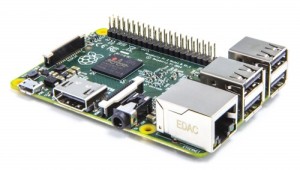Didn’t I just finish telling you it was interesting times? Today (2 February 2015) Microsoft announced that a version of Windows 10 will support the Raspberry Pi 2. And, if that’s not cool enough, they’ll make that version of Windows available for free — at least to “makers” (for some definition of “makers”). The Pi 2 […]
The Ferris Wheel is Heading Up: Microsoft Bringing Community Enagement
It’s a mighty interesting time to be a driver writer who’s interested in Windows. Those of you who have been doing this for “a long time”, like I have, know that working with Microsoft is a lot like living on a ferris wheel: For a while you’re on the top — Microsoft showers you with interest, […]
Connected standby: It’s Not Just for SOCs Anymore
Why should Windows driver writers care about Connected Standby, and what do they need to know about it? That’s what we’ll tell you in this blog post. What’s happens when you turn your cell phone off? The screen goes blank, but you can still receive email, text messages, and even notices from specific applications that […]
Do As I Say, Not As I Do (article + video)
When we teach classes, whether it’s KMDF, Software Drivers, and Debugging, we always provide our students with a long list of things that are “great ideas” that they should use. Some of these are ideas that make their lives easier as they go about their jobs of developing and maintaining Windows drivers. Others are best […]
Overlooked Features: Device Name Spaces (article + video)
Device Name Spaces are an often overlooked, but potentially useful, feature in Windows device driver design and development. This article (with accompanying video) describes how Device Name Spaces can be useful and how to implement them when you write a WDF driver.
Setting the WinDbg Symbol Search Path (article + video)
When people post the output from the WinDbg !analyze -v command to our NTDEV support forum, it’s often useless. The kernel stack doesn’t make sense. And there are banners and error messages saying “the symbols are wrong.” When this happens, the next thing that occurs is often a chorus of replies saying little more than “Fix your symbols and then repost […]
WinHEC Returns!
In the latest concrete demonstration of Microsoft’s return to engagement with the hardware design and driver development community, the long awaited return of WinHEC was announced earlier today in a blog post by Microsoft’s Matt Perry. For those of you who don’t know Matt, he works in Microsoft’s SPiCE (Silicon, Peripheral and Component Enablement) team. It’s […]
What is Arbitrary Thread Context? (article + video)
The concept of “arbitrary thread context” or “arbitrary process and thread context” is often confusing to new Windows driver developers. OSR’s Peter Viscarola clarifies this concept in this video: Here’s what Peter had to say: I’m going to describe what we mean when we say that a particular callback or function is called in an “arbitrary […]
A Second Chance for WPP Tracing (article + video)
As many of you already know, OSR was responsible for introducing WPP Tracing to the world outside Microsoft. When we saw how it was being used internally at Microsoft, we knew it would be valuable to the driver development community. Fortunately, the powers that be agreed! But our love affair with WPP Tracing was to […]
UMDF V2: A Good or Bad Thing? (article + video)
With its unique C++ syntax and its “charming” COM programming pattern, UMDF has largely been ignored by the Windows driver development community. But the arrival of UMDF V2 could change all that. With a C Language interface that shares the same syntax as KMDF, UMDF V2 promises to be a useful option for developers. But […]



